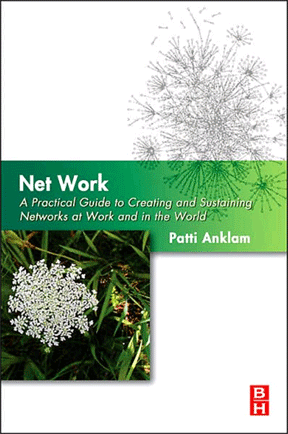I recently tweeted an observation of David Weinberger’s on how our language has shifted:
Over the past decade, we’ve gone from talking about social circles to social networks. A circle draws a line around us. Networks draw lines among us.
Social software becomes, therefore, the technology side of the definition of social media, and we use it when we refer specifically to software that enables and supports personal interaction. The personal interaction becomes social to the extent that there are named and identifiable people on each end (or in all the threads) of the transaction. These may be either tools, platforms, or social networking sites/services.
“web‐based services that allow individuals to (1) construct a public or semi‐public profile within a bounded system, (2) articulate a list of other users with whom they share a connection, and (3) view and traverse their list of connections and those made by others within the system.
These technologies are changing the way we work, the ways in which we grow relationships with other human beings, and the ways that we process, filter, and give context to information. These are the practices that are emerging that make us comfortable with, dependent on, and successful using social media. It is in this area that some of the more interesting new terms are sprouting. I say “interesting” because the terms themselves challenge us to think anew about who and how we — and our enterprises — are in the world.
An organization designed consciously around sociality and social tools, as a response to a changed world and the emergence of the social web. (Stowe Boyd)
Social architecture is the intentional use of social media in the design of how people work. For me, the term architecture implies design, as is evident in these definitions from two of my favorite people:
Social architecture is the conscious design of an environment that encourages certain social behavior leading towards some goal or set of goals. (Andrew Gent.)
Social architecture is a user experience oriented approach to the design and analysis of social tools. (Stowe Boyd)
[is] the development of knowledge, skills, and attitudes while connected to others (peers, mentors, experts) in an electronic surround of digital media, both real-time and asynchronous. (Harold Jarche).
Even as I include that definition, I feel that we must also acknowledge, via Jay Cross, that informal learning occurs by many means (especially face-to-face) that can’t be controlled or programmed, but by its nature when the learning comes through exchange with other human beings, it is social learning. I have also blogged social learning at theappgap.
Social team (from Boris Pluskowski): a collection of individuals who have a common understanding of the “game they are playing” (i.e. the team’s purpose); know in which goal they are trying to score (i.e. have a shared understanding of what a “win” looks like); and are collaborating together to achieve that aim. Boris is extending the concept of team using the concepts from Here Comes Everybody to illustrate the potential to tap the expertise, passion, and abilities of a large number of people to support a shared purpose.
…(in a nutshell) is the reason two people are talking to each other, as opposed to talking to somebody else.” (Hugh McLeod)
Note I tend to equate these social objects with a more scholarly term, boundary objects, most clearly explained by Lilia Efimova in writing about blogs as boundary objects.
Social analytics. The aggregation and correlation of the data collected from social software that reveals social structures and relations to assess interaction and conversation patterns. (See for the basics and also for his thinking about how this is an.)




Hi -
Sounds like everyone is catching a social disease.
-j
You forgot the new phrase — that reveals who is a newbie to SNA — "social networkING analysis" 😉
Patti, just found this blogbyte and want to thank you for taking the time to provide such well-crafted and researched piece on how our human language is changing due to social media influence and it continues to evolve. I appreciate the glossary, embedded links for further resourcing, and the clarity you put forth.
I agree with your observation of David Weinberger's comment about the entire shift has to do with the word, "social."
I remember seeing a recent tweet (either from @charlestlee or @guykawasaki that reminded all of us to retain "social" in "social media." I just finished viewing on YouTube, Sir Kenneth Robinson, "Do Schools Destroy Creativity?," where he expresses his concerns relating to our current static model for education which he believes, stifles creativity. I agree with his comments how social media is indeed changing how people are (and should be), learning, and the need for each of us to rethink old-school models for communicating, interacting, and learning.The app here should be for traditional academia, business corporate training programs, and non-profit / benevolent organizations' civic and community educational awareness initiatives.
Again, the point is: "social"…node-to-node…collaborative…aggregated."
Patti, I'll share with my Twitter followers, this excellent commenting you've created. Very intriguing. I just added you @panklam, to my thought leaders to follow.
Marta Driesslein
http://www.twitter.com/askmarta
Hi Patty
Great post - I found it very interesting! And thank you too for including my work in your list, am honored to have made it
I'd actually never heard of Clay Shirky's book either, which sounds fascinating - so I'll prob be running out to get and read as soon as possible to see how our ideas connect - thank you again!
All the best
Boris
http://www.completeinnovator.com
Pingback: Patti Anklam » The Five SMs